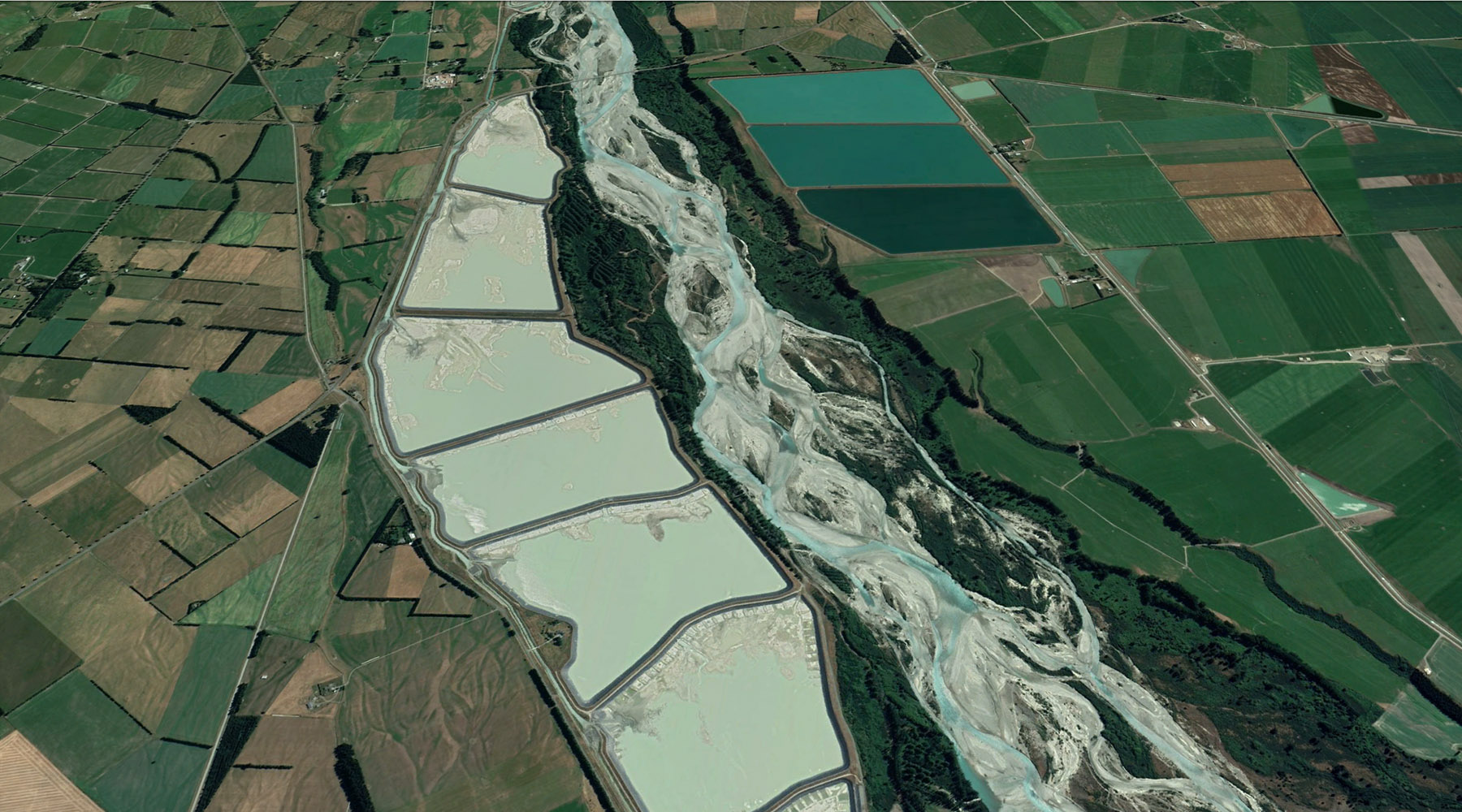Take a moment to examine the Google Earth image above, of the Rangitata River.
The ghosts of a past where this once mighty river flowed unconstrained by engineering, weeds, and agriculture are visible in the scars of braids and river channels on the left of the photo. (Also on the right, but harder to see.) This image illustrates four key impacts from people on braided rivers: abstraction of water for irrigation, engineering to prevent floods, willows and other non-native trees to prevent erosion, and habitat loss due to agricultural/foresty incursion.
Weeds and the predators hiding amongst them also are threats that have been introduced by humans. As too is climate change, a threat that will likely trump them all. While all of these threats have come about because of human activities, for ease of understanding and management, we have separated them into four overarching categories in the menu.
Unless we know what something is, we can’t define what’s threatening it or how to protect and restore it. The section on habitat loss explains braided rivers as a globally rare geological feature called a braidplain that supports one of the rarest, richest, and most dynamic ecosystems on Earth.
And we’re losing them. Fast.
Further information & references
- Resource Management Act 1991
- Canterbury Water Management Strategy (ECan)
- ECan document library: enter the river or catchment name in the ‘keywords‘ search field
- DOC catalogue of scientific publications: enter the relevant search terms in the ‘search’ dialogue box. You may need to vary your search, for example ‘black stilt’ gives far more results than ‘kaki’ or ‘kakī’
- 2021: Grove & Greenep; Land use change of braided river margins Braided Rivers Seminar July 2021
- 2021: Gunn & Smith; Expanding weed and pest control operations in Rakaia River – What next? Braided Rivers Seminar 2021
- 2021: Barrett The commercialisation horizon of new pest tracking and control technology Braided Rivers Seminar 2021
- 2019 (DOC): Management and Research Priorities: terrestrial invertebrates, lizards, terrestrial native plants, terrestrial weed invasions, and geomorphology, wetlands, river mouths and estuaries
- 2018: High Court decision released on RMA definition of “river bed”
- 2018 (NIWA): Braidplain Delineation Methodology
- 2018 (ECan): Braided Rivers: Natural characteristics, threats, and approaches to better management
- 2017 (NIWA): Modelling vegetation-impacted morphodynamics in braided rivers
- 2016 (DOC): Management and Research Priorities for New Zealand Braided Rivers
- 2016: Clark (ECan): Water abstractions and their effects on river flows (BRaid workshop)
- 2016: Jolley; Possible influences on nesting success of black-fronted terns and black-billed gulls on the Orari River (BRaid workshop)
- 2016: Seddon; GPS tracking of cats in riverbeds (BRaid seminar)
- 2016: Latham; Chicken and quail smells as chemical camouflage (BRaid seminar)
- 2015: (Radio NZ): Democracy and Water Rights
- 2015 (ECan): Land Use Change on the Margins of Lowland Canterbury Braided Rivers 1990-2012
- 2014: (Sanders Consulting): Is the ‘moat effect’ real? A review of what we know – and don’t know – about how flow affects predation on braided river birds (BRaid workshop)
- 2014 (Dowding): Conserving birds in braided rivers: an overview of current and future challenges (BRaid workshop)
- 2014 (Science Blogs NZ): Using models to understand and protect our braided rivers
- 2014 (NIWA): Modelling channel dynamics in braided rivers
- (undated) Hearnshaw et al Ecosystem Services Review of Water Storage Projects in Canterbury: The Opihi River Case

